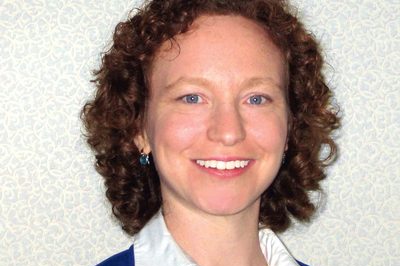Pregnancy is tough enough when one person in a couple is carrying a child. When both are, though — a uniquely lesbian possibility — life can get especially complicated. Sarah Kate Ellis and Kristen Henderson’s new memoir of simultaneous pregnancies, “Times Two: Two Women in Love and the Happy Family They Made,” is a welcome addition to the small genre of LGBT parenting chronicles — although some might consider the tale of double the hormones, mood swings and postpartum exhaustion to be more of a cautionary tale.
Ellis is a marketing executive in New York City. Henderson is a founding member of the all-female rock band Antigone Rising. In alternating chapters, they tell their intertwining tale of coming out, falling in love and starting a family.
They did not intend to coordinate pregnancies. When Ellis had fertility problems, Henderson decided also to start trying to conceive. Much to their surprise, they both become pregnant within three days of each other.
Along the way to parenthood, they discover their resiliency as a couple as they bond over the side effects of pregnancy — heartburn, hemorrhoids and swollen ankles — and agree to disagree over issues such as whether to know the genders of their children and whether to try natural childbirth.
Ellis and Henderson are not the first lesbian couple to be pregnant together — celebrity chef Cat Cora and her spouse Jennifer Cora are perhaps the most famous example, having had their third and fourth children about three months apart in 2009. And Discovery Health’s 2008 television special “Quads with Two Moms” profiled a lesbian couple who each gave birth to twins within a day of each other.
Such examples are rarities, however, even among a community known for “alternative” approaches to family creation. What stands out about Ellis and Henderson’s tale, however, is not the oddity of their dual pregnancies, but the normality of their lives. They register at Babies “R” Us. They each have supportive — though occasionally interfering — parents and extended families. Ellis’ jobs at Real Simple and Vogue magazines place her firmly among the hordes of urban yuppies. (Whether that’s “normal” may be debatable, but it’s certainly mainstream.) Henderson’s band may have toured with the Rolling Stones, Aerosmith and Joan Jett, but she is far from living a stereotypical, glamorous “rock star” life. And Ellis craves ice cream and pickles, perhaps the biggest pregnancy cliché of all.
As with all books about parenting, not every reader will agree with every choice the two make. I cringed a little at Ellis’ outrage that if they didn’t find out the genders of both babies in advance, one child would get “gender-appropriate gifts” but the other would receive gender-neutral baby gear in green and yellow, as if that was a bad thing. But even though I dislike the automatic pink/blue separation of children based on biological gender, I find it useful to be reminded that even lesbians are bound to have a diversity of opinion on this as well as other matters. Sometimes even the nontraditional can be traditional.
Speaking of diversity, however: In reading “Times Two,” it struck me that I can think of no full-length memoir, novel or movie about lesbian parenthood that was not about white, middle-class lesbians — and I say that as one myself. And while we need stories of all types of lesbian moms — even white, middle-class lesbian moms have varied and important tales to tell — I’d like to see greater racial and socioeconomic diversity.
The fact is, almost four times as many lesbian couples raising children (and two-and-a-half times as many gay male ones) receive public assistance, compared to opposite-sex married ones, according to Gary Gates of the Williams Institute at UCLA, using data from Census 2010. Black or Latino same-sex couples are twice as likely as white ones to be raising children, and more likely to face economic hardships. And Census data doesn’t even let us count single lesbian or gay parents.
So why don’t we hear the stories of non-white, non-middle-class lesbian moms or other LGBT parents? Many live in states without laws protecting LGBT people against employment or housing discrimination, places that layer bias against LGBT people on top of a history of racial prejudice. If we have yet to hear their voices, we cannot blame them for keeping silent to protect their families, or for spending time earning a living rather than writing books. And, simply put, mainstream media still favors white over any other color.
Yet these families do appear if we look hard, in the few LGBT parenting anthologies and the occasional newspaper article. Publishers should seek out the best of these stories for full-length treatment. Novelists and screenwriters should mine them for nuggets that could be incorporated into fiction.
That is not a criticism of Ellis and Henderson. They have a unique story that should be told, and they do it with a warmth and honesty that shows on every page. It is just that at the end of the book, when they watch “The Kids Are All Right” — the hit movie about (white, middle class) lesbian moms — and comment that lesbian moms are now “totally mainstream,” I can’t help thinking that it’s only true for a certain segment of us. Some of us may be mainstream, but others are still hidden in the shadows.
Dana Rudolph is the founder and publisher of Mombian (www.mombian.com), a blog and resource directory for LGBT parents.

